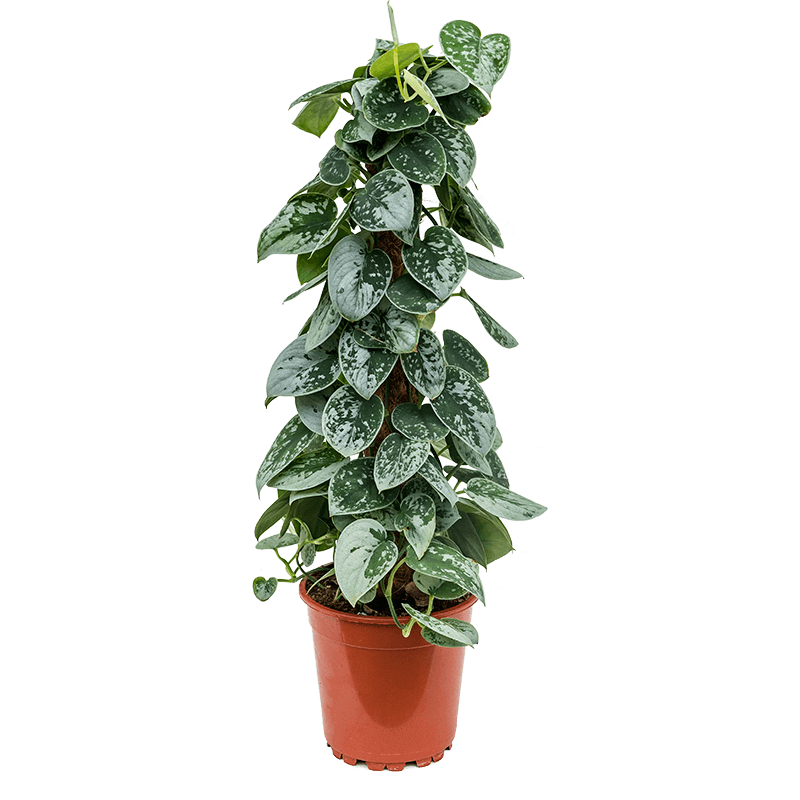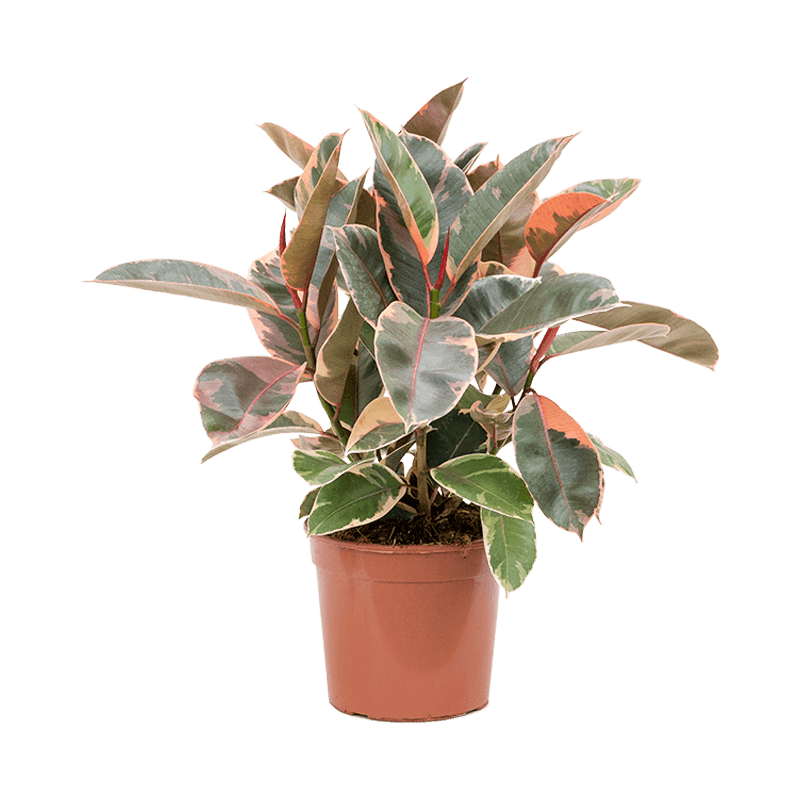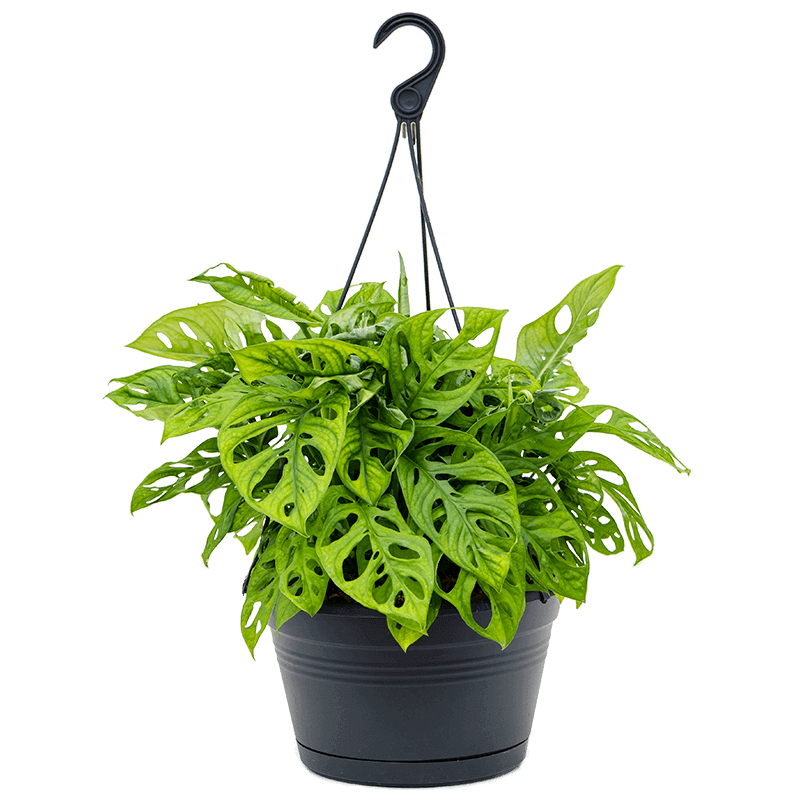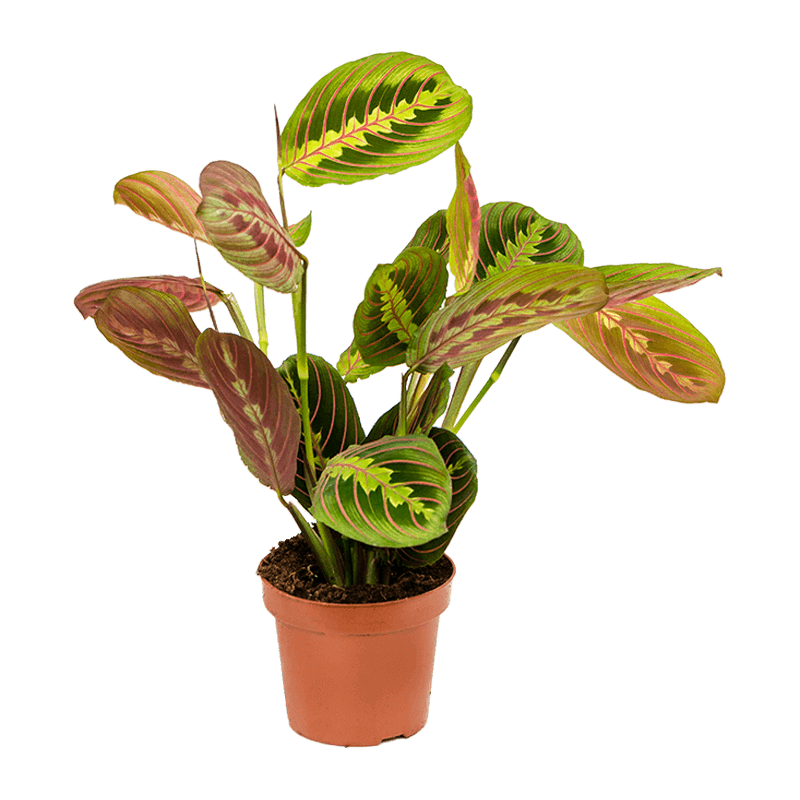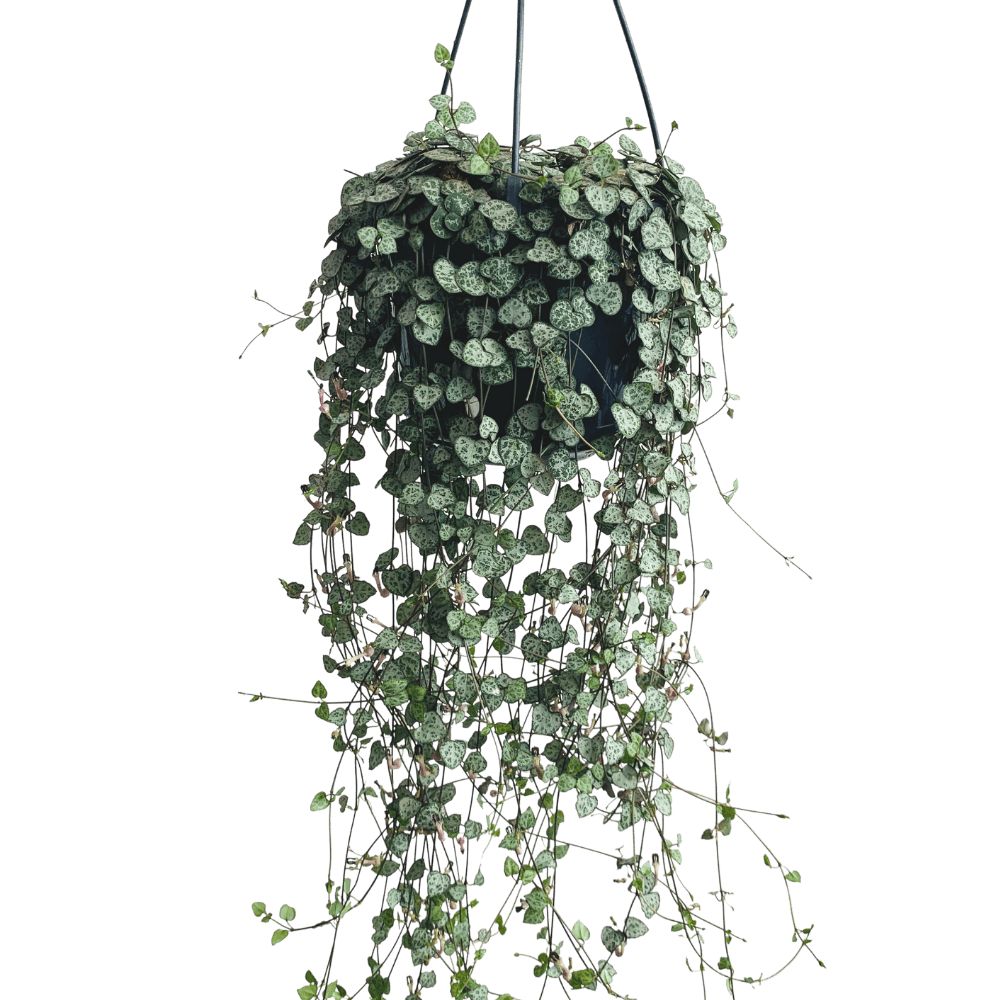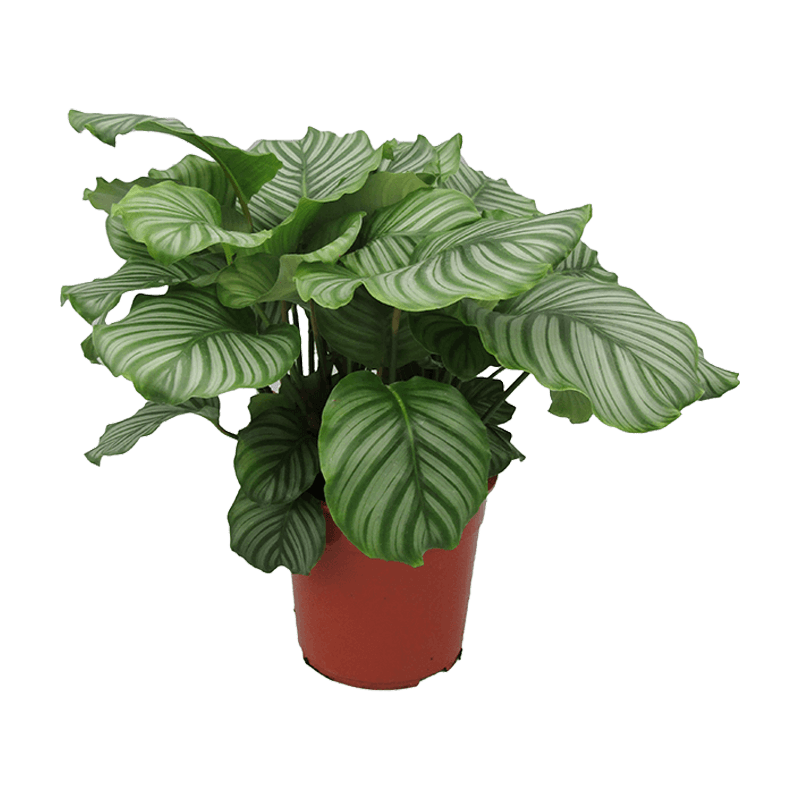how to care for scindapsus pictus
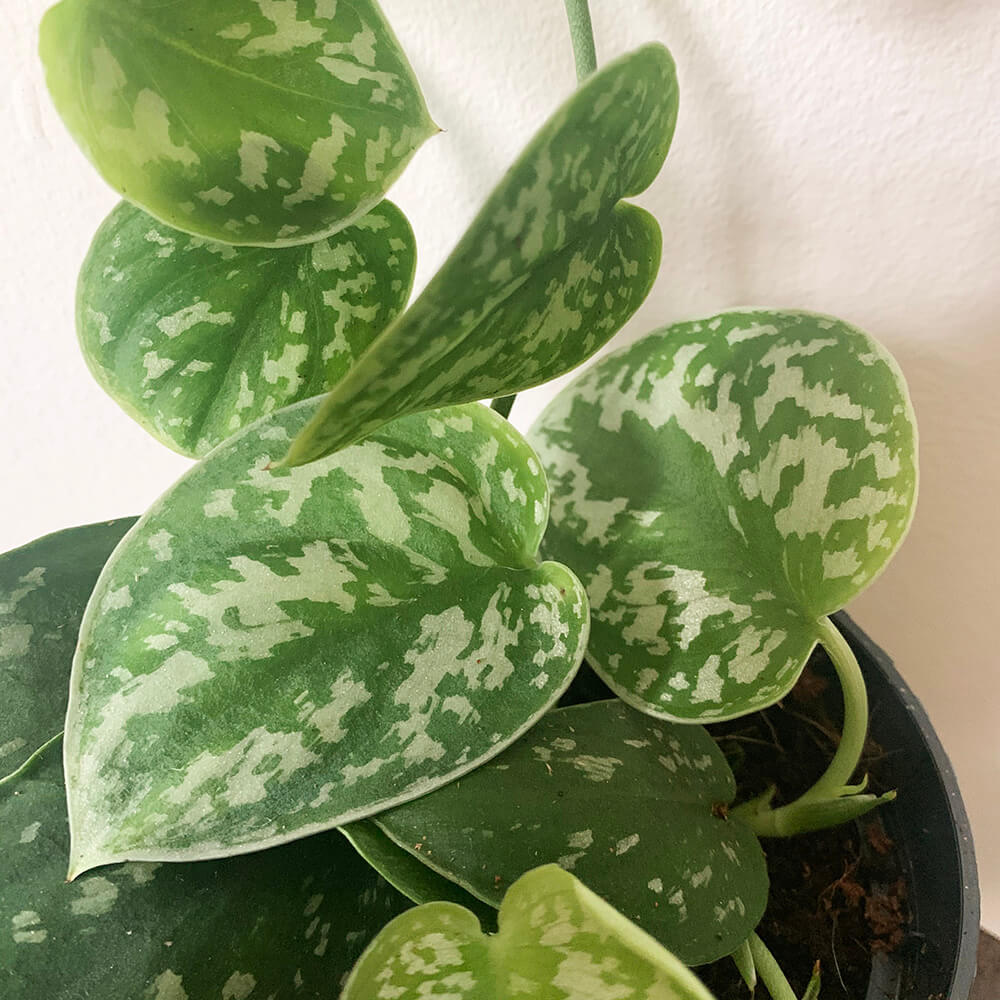
quick care guide for scindapsus
 |
Once a week in summer; once every two weeks in winter |
 |
Does well in low to medium sun |
 |
Fertilize once every two weeks in the summer |
 |
Toxic to pets – keep out of reach |
 |
Strong air purifier |
Scindapsus pictus is one of the easiest houseplants to grow. It does well in humid environments with warm temperatures ranging between 18°C – 29°C and a source of bright indirect light. Keep your Scindapsus pictus healthy by growing it in rich, well-drained soil, fertilizing monthly and watering when the top of the soil becomes dry.
detailed care guide for scindapsus
Scientific Name: Scindapsus pictus – commonly known as Satin pohtos or Silver pohtos
Origin: Southeast Asia
Light: Bright indirect light
Water: Water once the top of the soil is dry. Tolerant to underwatering, but much less tolerant of overwatering
Soil: Rich soil mixture with excellent drainage All-purpose houseplant potting mix / normal potting soil.
Temperature: Prefers warm environments with temperatures between 18°C – 29°C
Fertilizer: Every two weeks during the growing season with complete, water-soluble houseplant fertilizer
Humidity: Enjoys a humid environment (40% – 50% humidity around the plant); use a room humidifier or a humidity tray in winter, if the air is dry and do not mist the plant as its aerial roots will also absorb moisture which might result in overwatering.
Pruning: Only cut away old or yellowed leaves. Necessary only to control the size and shape of your plant.
Re-Potting: Doesn’t need frequent repotting – only repot when it becomes root bound (roots sticking out of the bottom)
Propagation: Propagate through cuttings in late spring/early summer – take 10 cm tip cuttings in spring or early summer and place them into moist peat moss-based potting mix. The cuttings will root easily in about a month.
Diseases and Pests: Mostly free of pests and diseases, but might be attacked by scales or spider mites, which can be simply washed off. Susceptible to root rot if it is overwatered.
Toxicity: Toxic to animals.
scindapsus origins & overview
Scindapsus pictus (also knowns as Satin pothos or Silver pothos) is an evergreen tropical climber native to the warm and humid regions of southeastern Asia. Its name is an epithet meaning “painted” and specifically referring to the variegation on the leaves. It is known for its heart-shaped matte leaves, splashed with spots of shimmering gray, and fast-growing trailing vines. The leaves come in two different forms: juvenile leaves which are oval, heart-shaped and entire, but mature leaves which are pinnately lobed.
In its natural habitat, Scindapsus climbs along the trunks and limbs of trees attaching themselves with aerial roots. Therefore, it’s a great specimen to climb up a coir pole, or placed on a ledge/shelf to cascade over as a trailing plant and makes it the perfect accessory for any household.
scindapsus light requirements
As a tropical rainforest plant, Scindapsus pictus is not used to receive direct sunlight. This means it’s not a good idea to place your Scindapsus pictus near a window that receives a lot of direct sun every day. Instead, place it next to a window with a curtain to protect it or place it further away from the direct light source.
However, don’t place it in a location that does not get enough light as the plant won’t produce healthy growth.
how to water the scindapsus
Scindapsus pictus doesn’t like wet, soggy soil and hence you should take care when giving the plant a drink. First, check whether the soil feels dry to the touch – poke your finger into the soil to check – and only water it if it feels dry. Water slowly and deeply with room-temperature water until you see water pouring out of the drain holes in the pot. You should water the plant every 1-2 weeks depending on the time of the year, allowing soil to dry out between waterings. Water it once a week during summer and twice a week in the winter. Expect to water more often in brighter light and less often in lower light.repotting the scindapsus
When the roots are emerging from the drainage holes of the pot you know it’s time to repot your Scindapsus pictus. This might be necessary every 1-2 years, depending on how fast your plant is growing.
When repotting, take a pot about 2-5 cm larger than the previous one – a larger container will hold too much water – and fill it with a fresh indoor potting soil mi. Try to use a pot with drainage holes for a healthier plant.
frequently asked questions for scindapsus
why are the leaves on my scindapsus curling ?
Leaf curling on a Scindapsus Pictus is often caused by underwatering. To avoid a curling foliage, try to water the plant as much as needed. Water it until the water pours out from the bottom of the pot’s drain holes and only when the top of the soil becomes dry. Also, like most houseplants, this one requires more water during summers than in winters, so make sure to adjust your watering schedule according to the weather conditions and the changing seasons. More precisely, water it once a week during summer and twice a week in the winter.
why are the leaves on my scindapsus turning yellow?
The leaves on your Scindapsus could be turning yellow for a number of reasons:
Overwatering the plant is one of the main causes of yellow foliage.
Solution: Water only if the top of the soil is dry to the touch. In the winter, your plant can wait a little more between waterings, but be sure to boost the humidity around your plant with a humidifier, or pebble tray.
Additionally, if the soil is too heavy and it is retaining too much water it can also lead to yellow leaves. It should remain damp, but not wet or soggy.
Solution If the soil is too heavy and retains too much water, repot using a peat-based, rich potting mix with excellent drainage.
Another reason that may cause leaves to turn yellow is improper lighting . Scindapsus grows best when placed in bright indirect sunlight, however, they also adapt to lower light if needed. When placed in very low light, yellow leaves will appear. Be careful not to place the plant in full sun as the foliage will burn.

